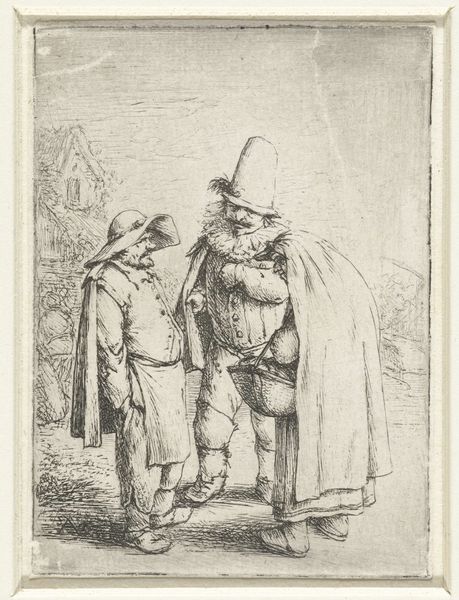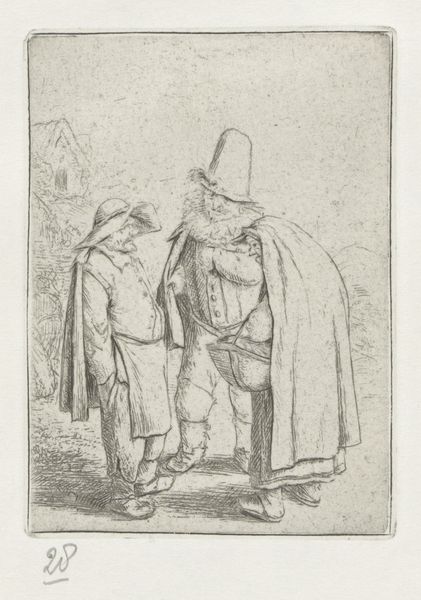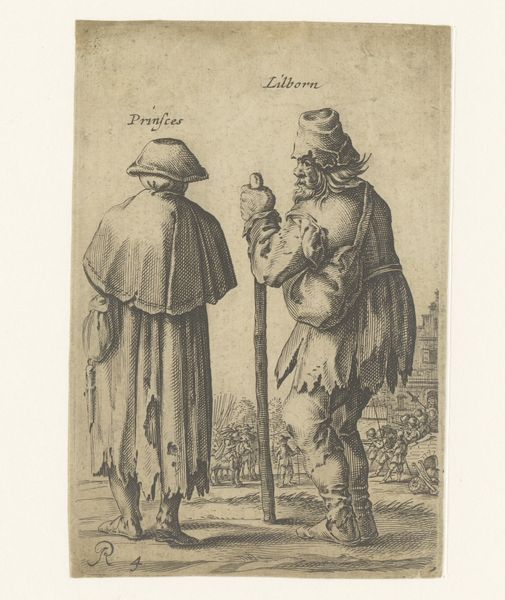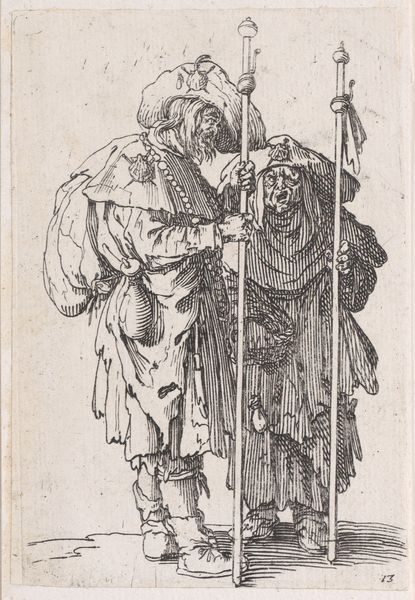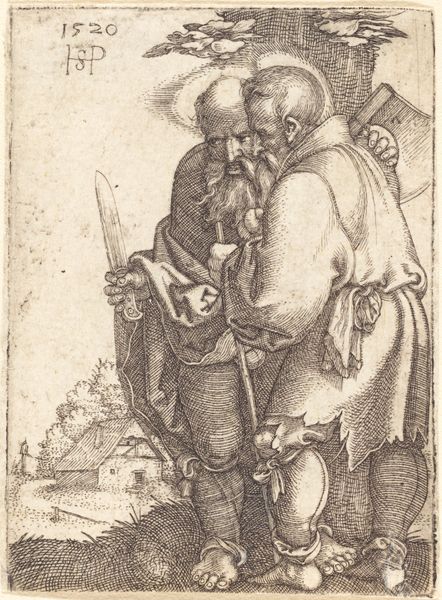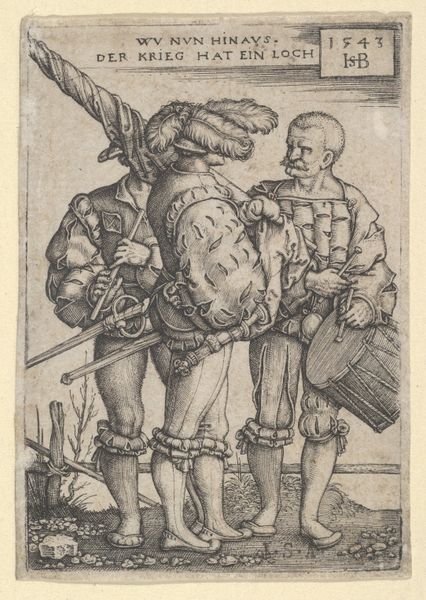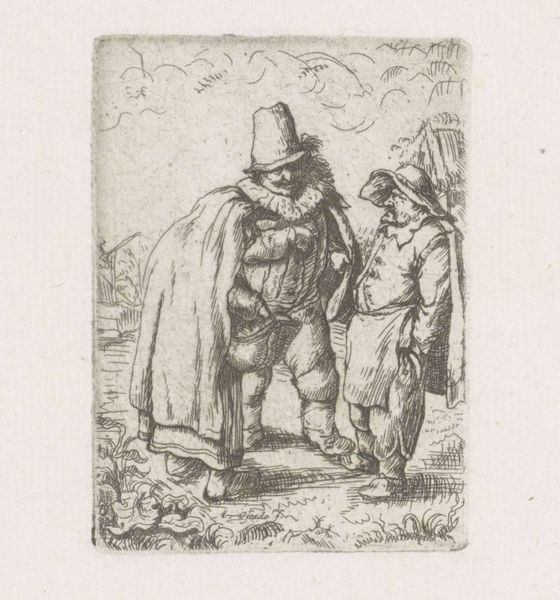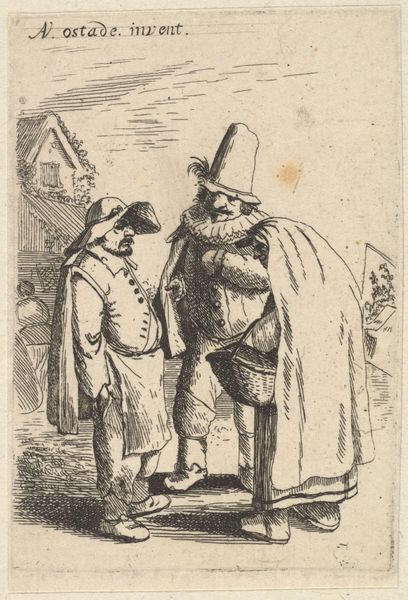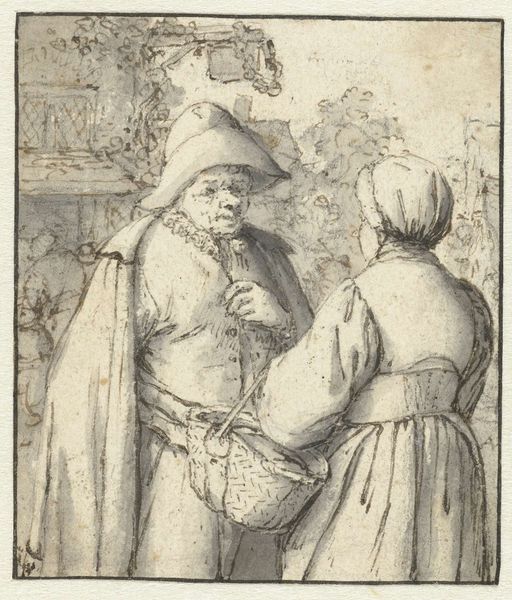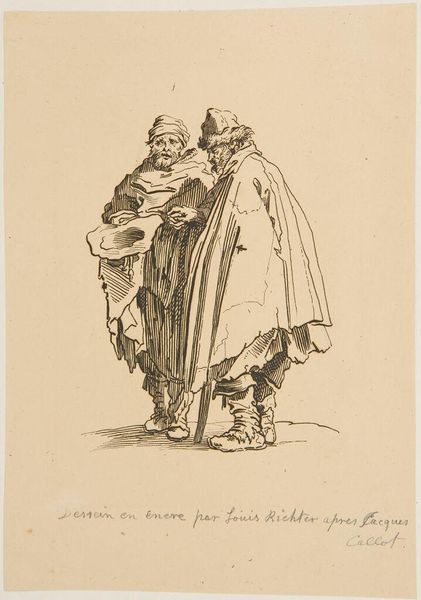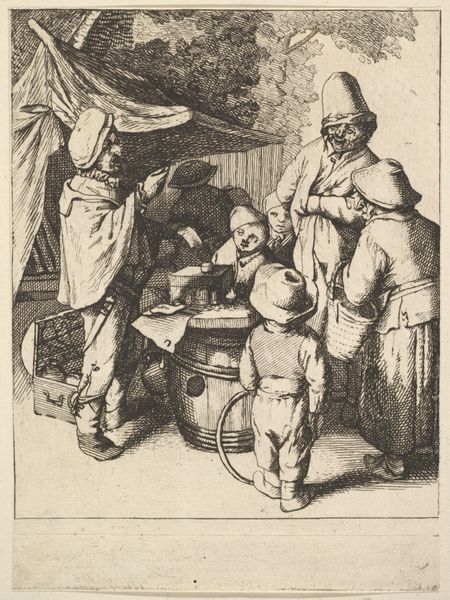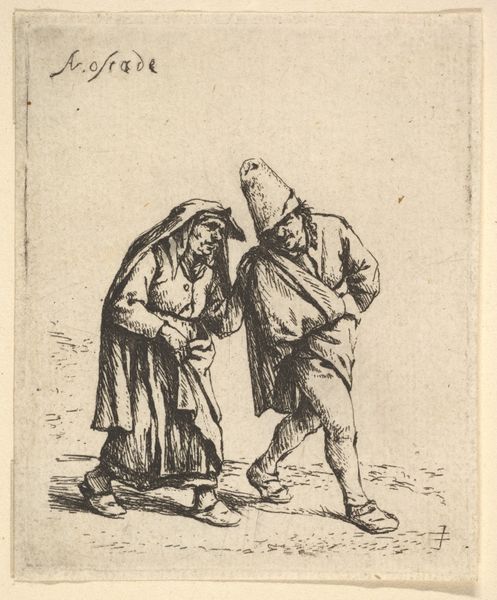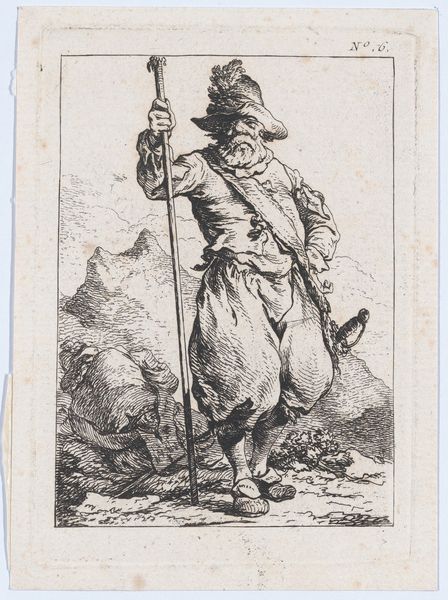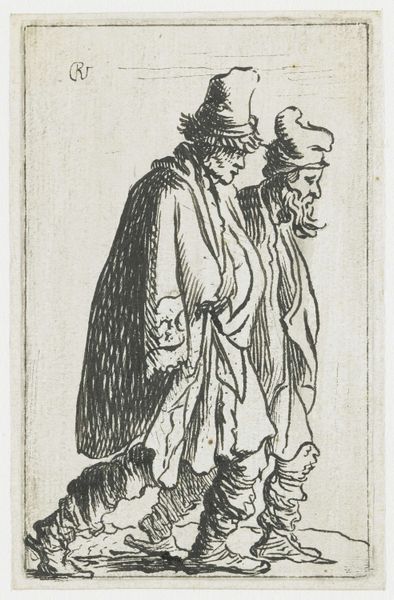
drawing, print, etching, engraving
#
drawing
# print
#
etching
#
men
#
genre-painting
#
engraving
Dimensions: Sheet: 3 11/16 × 2 5/8 in. (9.4 × 6.6 cm)
Copyright: Public Domain
Adriaen van Ostade made this print, Grotesque Figures, using etching, a printmaking technique, around the mid-17th century. With etching, a metal plate, typically copper or zinc, is coated with a waxy, acid-resistant substance called a ground. The artist then draws through the ground with a sharp needle, exposing the metal beneath. When the plate is immersed in acid, the exposed lines are eaten away, creating recessed lines in the metal. Ink is then applied to the plate, filling these lines, and the surface is wiped clean. Finally, the plate is pressed onto a sheet of paper, transferring the ink and creating the print. Look closely at the image, and you can see that the etched lines vary in thickness and depth, creating a range of tones and textures. This required careful control of the etching process, demonstrating van Ostade’s mastery. The print could then be multiplied for sale, an early form of mass production and circulation of images. Inexpensive prints like this one brought art to a wider public, reflecting the changing social landscape of the time. By looking closely at the materiality and techniques employed, we gain insight into the artwork’s cultural and economic context.
Comments
No comments
Be the first to comment and join the conversation on the ultimate creative platform.
